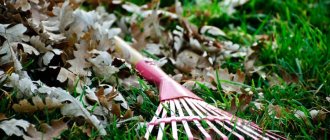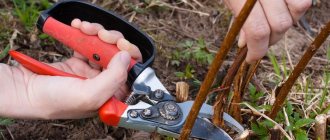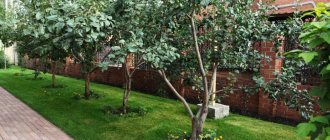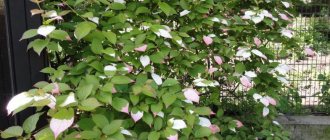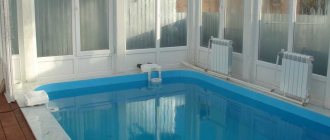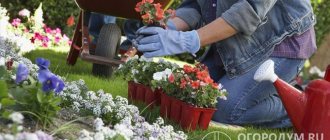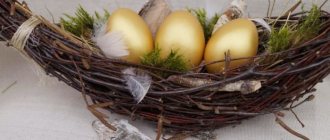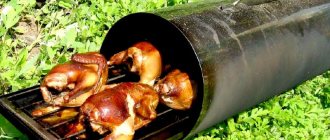People who are starting to develop a suburban area for the first time, be it a dacha or a residential building, face a lot of difficulties. Well, if you want not only to have a lawn, but also to garden or grow your own garden with fruit and berry crops, then there are even more questions. We will try to answer one of them, namely those related to garden tools and equipment. So, gardening tools are items and tools for cultivating the soil and caring for plants. Of course, there are a huge number of different types of tools and equipment for various purposes, but we will try to compile the TOP of the most necessary, universal and frequently used.
Hand scoops and ripper forks
These items are needed by those who grow plants for planting and digging up bulbs (tulips or garlic, it doesn’t matter), weeding and loosening the soil around vegetable and ornamental plants. Hand scoops and rippers are absolutely irreplaceable and necessary tools for any gardener. Comes in a wide variety of shapes and sizes. It is better to have different versions of this tool on the farm.
Gardening gloves
Also worth considering as inventory. If we do not consider practically disposable fabric construction gloves (which are also in demand), then the need for high-quality gardening gloves is undeniable, and especially gloves for working with roses and other thorny plants. They, as a rule, protect not only the hand, but also the part of the arm above it, while allowing you to comfortably perform all manipulations. Other types of gloves protect the gardener when working with tools. There are both summer and winter options.
Garden sprayers
As a rule, sprayers are needed by those who garden to protect their gardens and vegetable gardens from diseases and pests. There are a lot of different options for sprayers, both manual and with a shoulder strap and in the form of a backpack. We recommend that you read the article on choosing a garden sprayer, which reviews both various models and leading manufacturers of this type of equipment.
Electric tool
Electric, battery-powered and gasoline-powered tools can make gardening easier. There are a huge number of them. Tools, the costs of which will be justified and will pay off in 2-3 seasons.
Trimmer or lawn mower
A lawn mower should be purchased if your lawn is sown on dense, level soil. Working with her and cultivating the green meadow will be a pleasure.
The trimmer is used to mow hard-to-reach areas: around trees, along paths, along the edges of flower beds. It will also be necessary if you just need to mow the grass.
Lawnmower
Cultivator or walk-behind tractor
This unit will become an indispensable assistant if you need to process large areas. The kind where you could be stuck with a shovel for a week. If you have several high beds and a couple of greenhouses on your site, you can completely do without a cultivator. And if you are planting a full-fledged garden of 2 acres or more, it will be difficult without it. Decide based on your area for annual planting.
Walk-behind tractor
Chainsaw or reciprocating saw
These helpers will greatly facilitate the work of pruning trees. Chainsaws are usually powerful chain tools that can handle both long-term trunks and seasonal pruning. A reciprocating saw will help cut branches from trees, cut down a small tree, and make seasonal pruning easier. It can also be useful for construction or dismantling work.
Chainsaw for gardening
As you may have noticed in the article there are often photos of instruments from the Fiskars and Gardena brands. These companies specialize in quality gardening tools. Once you decide to purchase these brands, you will be able to verify their quality, strength and durability from your own experience.
Brush shears
Designed for trimming bushes and giving them the correct shape. The cutting blades, like the handles, of hedge trimmers are quite long (30-50 cm), they are used with both hands, and with a certain skill they can be used to form very beautiful and unusual crowns. Or use it for trimming hedges.
Special devices
There are a number of devices designed for a narrow range of jobs. They are quite expensive and will only pay for themselves with large volumes of work:
- garden shredder - used for processing plant residues;
- robotic lawn mower - for large and beautiful clearings;
- blower - a stream of air will clear the lawn or dry stream of leaves, and the yard of debris;
- high pressure washer - will help wash the facade of the house or paving stones;
- a hedge trimmer is the key to an ideal hedge;
- turf trimmer - for professional use on large areas, necessary for preparing sites for further improvement.
Brush cutter
Tapeners - plant garters
This tool is very convenient and is designed for tying plants to a support. For example, when growing grapes, tomatoes, cucumbers and any other vines. Few even experienced gardeners know about the existence of tapener, but anyone who has ever used it will certainly highly appreciate all its benefits. The speed of the garter increases many times, and this work becomes extremely simple.
Choppers and hoes
This is a tool for loosening and weeding soil on a long stalk. They are used for weeding beds and flower beds while standing, which greatly facilitates the procedure itself (if you work while sitting with a manual ripper). There are quite a few forms of hoe, but generally they come either with a wide blade for quickly processing a large area, or with a narrow blade for carefully loosening and removing weeds between plants. There are also specialized tools from this group, for example, for trimming the edges of the lawn, for cutting the roots of weeds without removing them, and so on.
Minimum Required
Every gardener must have this set. If any of the tools are missing, then the shortage will certainly be acute.
Shovels
The farm must have at least two types of shovels.
- Bayonet - will help you plant potatoes, dig up bushes, and perform many other operations. You will have to look for a shovel suitable for a specific soil: for clayey and heavy soil, a rounded blade is suitable, and for sandy soil, a tool with a straight edge is suitable.
- Scoop - resembles a scoop, only larger in size and with a long handle. It will come in handy when you need to collect small debris or pour sand into holes.
You cannot skimp on these agricultural implements. It is advisable to buy reliable tools made of rail or stainless steel. Titanium products are good. The cutting should be taken from wood or metal.
Garden scoop
A mini-spatula will be needed when transplanting seedlings and to make holes. If you are working with small seedlings, then a small scoop will be useful, but for trees and shrubs it is better to buy a larger spatula, for example, a sapper one.
Please note that the design of the scoop may differ: wide and narrow, short and long, with a cutting edge or a perforated blade. For the main part of the functions, a regular spatula with a rounded edge and medium blade width is suitable. Start with her.
Rake
They are useful for collecting leaves and tops, as well as for breaking up lumps, making beds and leveling the ground. The teeth can be straight or twisted. The former are suitable for cleaning, and with the help of the latter it is convenient to loosen the soil.
To rake fallen leaves or grass, use a fan rake. They have a reduced gap between the teeth, which makes things go faster. In addition, the equipment itself weighs less, which means a person will not get so tired.
Hoe
For weeding, loosening and hilling, it is worth getting a rag. We list the most popular varieties.
- Garden hoe - characterized by a wide blade located at a right angle relative to the handle. It is useful for any task, but works best in the fight against weeds.
- A hoe or hoe (pictured) is distinguished by a semicircular pointed edge. Designed for removing grass and creating holes for planting.
Pitchfork
They are needed to stack hay and remove tops, dig up hard ground, and in some cases even collect vegetables that are usually dug up with a shovel. It all depends on the form.
Digging forks have straight teeth that can be faceted, round or flat. Digging forks with rubber tips are used to harvest potatoes. The harvesting ones are much lighter and thinner, and the manure ones have curved teeth like a bucket.
Secateurs
Designed for trimming tree branches of small diameter and cutting flowers. There are bypass and persistent. If you have a large garden, then it is advisable to choose both types of pruners.
Bypass options are equipped with two different blades: one of them has a notch, and the other is convex. This device is good for cutting young shoots.
It is better to remove dry branches with persistent pruners. It has only one blade on top, and the lower part serves as a stop.
Axe
A multifunctional and very necessary tool: cutting down a tree, hammering a peg or chopping wood.
It is preferable to take a weapon with a handle made of wood or carbon fiber, since they are lighter than metal ones and fit more comfortably in the palm. For the main part, steel is used, the quality of which can be checked by simply clicking on the metal with your finger: the sound must be ringing and slowly decaying.
Knife
This device is in every home, but for the vegetable garden it is advisable to have a separate one. It should be medium in size, with a comfortable handle and a sharp edge.
Using a knife, it is convenient to cut ripe fruits without damaging the stem, uproot the roots of a weed, or clear vegetation from the seams between the tiles of the paths.
Axes
An ax is probably a necessary thing in any household. There are both cleavers for chopping wood and various modifications for chopping wood. Carpenter's, tourist and simply household axes. If you need to cut down a small tree or chop a stick, it is always easier to use a simple ax than to run a chainsaw. Well, independently chopping wood for a fireplace or wood-burning stove is a fairly common activity among owners of suburban areas. This is a good change of activity for those who have been busy with office work for a long time.
Electric and petrol tools
This is a very extensive group of garden tools, and a review of it is beyond the scope of this article. These include trimmers, lawn mowers, cultivators, and various walk-behind tractors and chain saws. There are a great many options, modifications and manufacturers of all this equipment, and the price range is also huge. In one, even large, article it is impossible to consider all types of garden tools. There are very highly specialized types and options that are used for specific work, for example, a special tool for planting bulbous plants or for removing weeds on the lawn. When growing ornamental plants, rather unique types of tools are also often used (for example, for pruning coniferous plants, specialized pruners, reminiscent of pliers, are used, as for bonsai, to cleanly remove branches). As you get involved in country life, gardening processes, or growing your own fruit and berry garden, you begin to understand what gardening items, tools and equipment you need to purchase. By communicating with enthusiastic colleagues, they learn what other types of tools there are, and with experience comes a greater understanding.
Useful equipment
In addition to tools, you also need other gardening equipment, which you cannot do without in plant growing.
- Watering can
Designed for watering. It is better to choose a large container so that a lot of water can be placed in it at one time. At the same time, you shouldn’t overdo it either: it shouldn’t be very hard for you, otherwise it won’t take long to strain yourself.
It will be great if there is a spray nozzle installed at the end of the watering can. Thanks to it, the soil will not be washed away.
- Bucket
A couple of high-quality buckets are a must-have for any dacha farm. Draw water, bring sand and fertilizers, harvest crops - there will be a use for it. In gardening, containers with a volume of 10–12 liters are usually used.
Galvanized containers are strong, resistant to deformation and do not rust. But you should remember that you cannot carry earth and sand in it. Also, a thin layer is afraid of contact with alkali, acid, washing powder solution or salt.
Plastic buckets cannot withstand heavy loads and crack. But they do not react in any way to interaction with aggressive compounds and bulk substances.
- Hose with sprayer
If you have a water supply system: a central water supply or your own well, then you can organize watering from a hose. It's easier than wearing a watering can.
There are hose options that, when folded, have compact dimensions and take up almost no space. This is a suitable solution if you are forced to take the equipment to the barn or house after each watering.
For permanent outdoor storage, you should take a rubber sleeve.
- Wheelbarrow
To avoid having to carry buckets of sand or manure, it is advisable to purchase a comfortable wheelbarrow. You can transport seedlings, ripe fruits or garbage in it.
Pay special attention to the design. So, for areas with narrow paths, a wheelbarrow with one wheel is suitable. Inflatable wheels perform well on soft soils, and cast rubber is good for hard soil.
- Sprayer
It will help to spray chemicals against pests on the plants. Backpack sprayers are popular because they free up your hands and allow you to move freely.
Manual options work by activating a pump. Depending on the area of the site, it is necessary to select the appropriate container volume.
- Ropes and pegs
Useful for tying up plants and supporting heavy branches. They will also help you draw up a planting “plan” and outline the places where the beds and trees will be located.
Make sure you have markers to indicate which varieties you are planting and where.
- Covering material and arcs
In some regions, winters are very cold, and frosts are common in the spring, so to protect the seedlings from unpleasant weather, you have to cover them.
Non-woven polypropylene fiber or polyethylene film is best suited for these purposes.
If you live in places where summers are very hot, then a shading net will help protect your planting from the sun.
Arcs will be needed to lay down the protective sheet without damaging the plants.
- Gloves and shoes
To work in the beds, it is advisable to wear rubber shoes on your feet. It is easy to wash and does not allow moisture to pass through. In early spring or autumn, when there is mud all around, the best solution is rubber boots: they will keep your feet dry and protect your trousers from getting dirty. In the dry season, short galoshes are ideal.
In the garden, your hands suffer greatly: dirt and grass that are difficult to remove appear, calluses appear, and the skin dries out. Therefore, you need to protect your skin from negative effects and purchase several gloves for different occasions: latex, silicone, cotton, leather and others. They can be thin or thick depending on the functions performed.
When pruning thorny bushes, it is necessary to wear special gloves with elongated cuffs that will protect the wrists and forearms. In the cold season, choose insulated models.
- Knee pads
Weeding small weeds or sowing seeds requires painstaking individual work. Standing bent low is very uncomfortable. But standing on your knees, such work is less tiring. To keep your clothes clean and not get hurt by pebbles, it is better to use a backing.
Bedding is made of polyurethane foam or sewn from durable synthetic materials with padding. The main thing is that it is dense enough and does not allow the cold to pass through.
